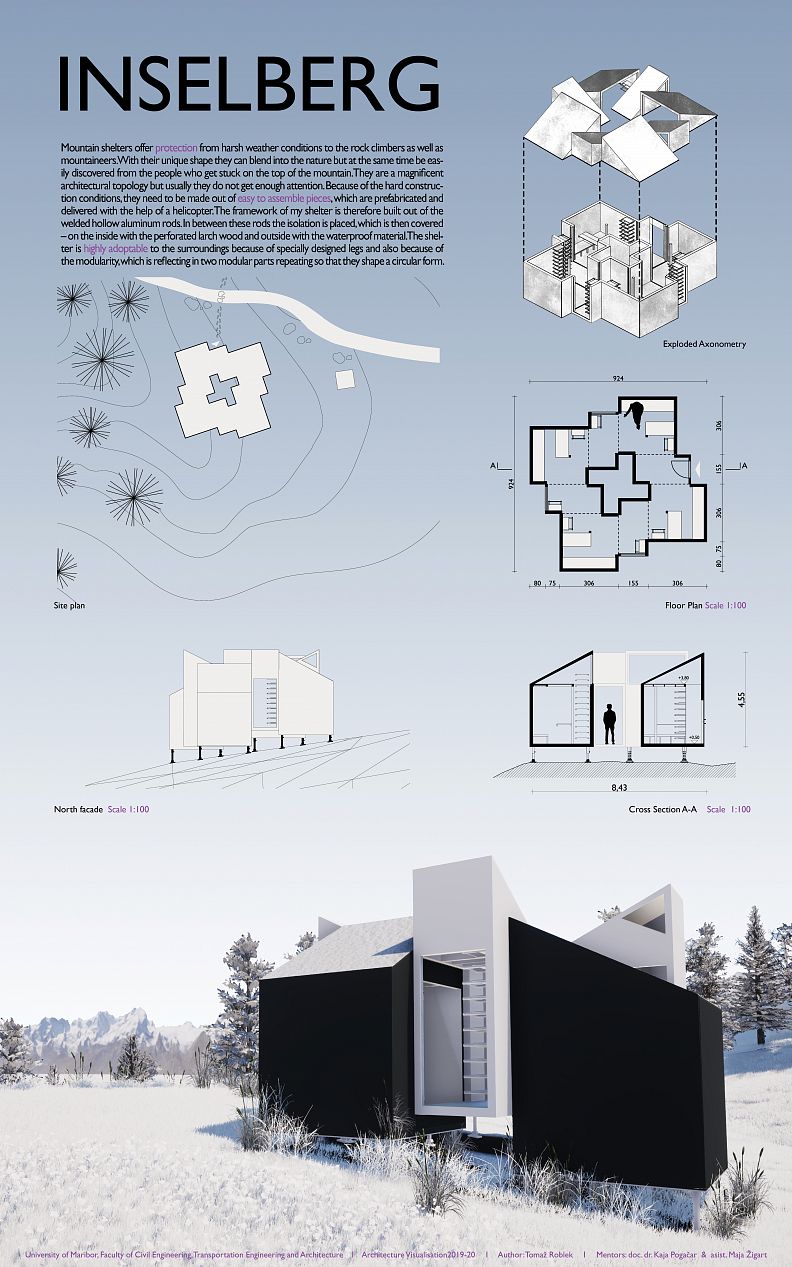Inselberg

Project idea
Mountain shelters offer protection from harsh weather conditions to the rock climbers as well as mountaineers. With their unique shape they can blend into the nature but at the same time be easily discovered from the people who get stuck on the top of the mountain. They are a magnificent architectural topology but usually they do not get enough attention. Because of the hard construction conditions, they need to be made out of easy to assemble pieces, which are prefabricated and delivered with the help of a helicopter. The framework of my shelter is therefore built out of the welded hollow aluminum rods. In between these rods the isolation is placed, which is then covered – on the inside with the perforated larch wood and outside with the waterproof material. The shelter is highly adoptable to the surroundings because of specially designed legs and also because of the modularity, which is reflecting in two modular parts repeating so that they shape a circular form.
Project description
In the small European country called Slovenia, people adore mountaineering. The most famous mountain range in Slovenia is called Julian Alps which starts in Slovenia and stretches through Austria and Switzerland and finishes with the highest European mountain - Mont Blanc. People like to hike there because of the purity of nature, social isolation and because of the amazing views that are opening on the mountain tops. But the Alps are notorious for their sudden weather changes. The bigger the mountain is, the higher the risk of getting caught under the storm is. That is why people often need to overnight on the top of one of those mountains. That is when the Alpine shelters come in play. People are building them for centuries but there are two main problems of building them - strict construction policies and complexity of construction.
I belong to those people who like to hike and I was always happy to discover new mountain shelters. That is why I decided to design my own mountain shelter. In my case, the Alpine shelter is positioned quite remotely. I wanted to catch this remoteness in one word so I named it “Inselberg”.
Technical information
Site plan, North facade, Exploded Axonometry, Floor Plan, Cross section and a visualization.


